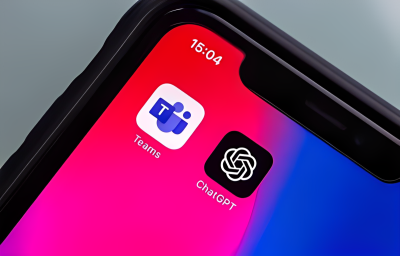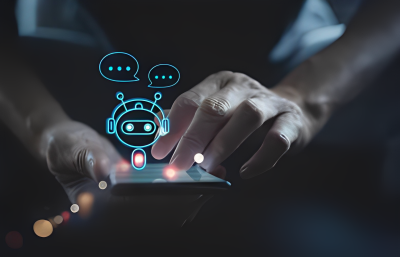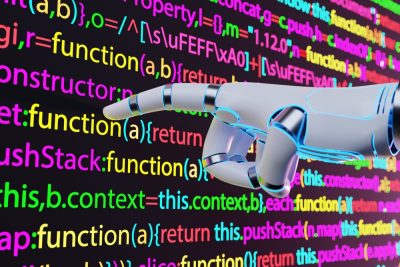Highlights:
- PaLM 2, the second version of the Pathways Language Model, was unveiled recently at Google LLC’s annual developer conference Google I/O, where artificial intelligence took center stage.
- These improvements include multilingual comprehension, such as idioms and phrases, and improved logical reasoning and coding abilities.
PaLM 2, the second version of the Pathways Language Model, was unveiled recently at Google I/O, Google LLC’s annual developer conference, where artificial intelligence took center stage.
It’s an LLM artificial intelligence that is transformer-based, developed by Google Research, and powers the Bard AI chatbot and other company products. PaLM 2 is an enhanced version of the original PaLM, a high-performance language-based AI that is scalable and generalizable across various tasks such as conversing, reasoning, creating, and inferring without sacrificing efficiency.
These improvements include multilingual comprehensions, such as idioms and phrases, as well as improved logical reasoning and coding abilities. The Vice President of Google DeepMind, Zoubin Ghahramani, stated that PaLM 2 has “significantly improved its ability to understand, generate, and translate nuanced text — including idioms, poems, and riddles — across a variety of languages” and can now comprehend more than 100 languages.
Like first-time learners of another language, an AI might struggle with an idiom if it translates it literally. Take, for instance, the German phrase “Ich verstehe nur Bahnhof” (“I only understand train station”). Literally, this statement makes no logic.
The new PaLM 2’s multilingual capabilities can better comprehend idioms and figurative phrases across languages and recognize when these phrases may be mistranslated.
Ghahramani claims that PaLM 2 can now pass tests of advanced language proficiency at the “mastery” level.
Regarding reasoning, PaLM 2 was trained on a variety of scientific publications and websites containing mathematical expressions. This resulted in a superior reasoning engine with enhanced logical capacity. To demonstrate this, Google revealed that PaLM 2 could solve word puzzles involving the order of colored vehicles on a shelf, such as those found in elementary school textbooks.
PaLM 2 has been trained in many programming languages, allowing it to excel in popular programming languages like Python and JavaScript. However, it can also assist individuals in lesser-known specialized languages such as Fortran and Verilog. It can help with documentation in multiple spoken languages due to its polyglot capabilities.
Ghahramani said, “PaLM 2 is an extremely versatile model and it can adapt to a wide range of tasks.” Since it’s a general-purpose AI, it could be distilled into model families that could even be shrunk down so small it could run on mobile devices, even offline.
The PaLM 2 AI developed by Google’s research team has been customized for specific use cases. One such variant is Med-PaLM 2, which healthcare professionals with medical knowledge training use. It demonstrated an 85% accuracy level in the MedQA test, derived from a medical licensing exam, performing at an “expert” level. The Med-PaLM 2 is now being updated to read X-rays and mammograms to improve patient outcomes in the future. Another variant, Sec-PaLM, is a cybersecurity version designed for security-related use cases. It helps in the analysis and explanation of potentially malicious scripts.
To Making Google Bard Better
In February, Google announced Bard and initially launched it in the U.S. and the U.K. The chatbot was later moved to PaLM 2, which facilitated its recent developments, such as the capability to create and debug code in late April. According to Sissie Hsiao, the Vice President and General Manager of Bard at Google, coding has recently become one of the most popular features of the chatbot.
Google has decided to expand the availability of Bard to a wider audience by eliminating the waitlist and making it accessible in over 180 countries, with more countries to follow. The chatbot is currently available in English, Japanese, and Korean, and it is expected to support 40 languages in the near future.
Hsiao said in a blog post, “As we continue to make additional improvements and introduce new features, we want to get Bard into more people’s hands so they can try it out and share their feedback with us.”
Google is planning to introduce multimodality to the Bard chatbot interface shortly, which will allow for the inclusion of images and text.
In addition to text, people will be able to use images to pose queries and make statements to the AI, and Bard will comprehend them and be able to determine context from the images.”
Bing Chat, the AI chatbot powered by OpenAI LP’s GPT-4 and owned by Microsoft Corp., recently launched a visual update that includes integration with OpenAI LP’s DALL-E to generate artwork on demand using the Bing Image Creator. “To make this happen, we’re bringing the power of Google Lens right into Bard,” said Hsiao.
Google Lens will analyze the photo, detect animals, and generate amusing captions in real time. Sissie Hsiao commented that this feature will be added to Bard in the near future.
In addition, Google Bard is getting some updates that include citations when it retrieves information from the internet or a block of code from another project. A dark theme will also be introduced to reduce the strain on the user’s eyes when viewing white backgrounds.
Furthermore, new export features will be added to Bard, allowing users to push out content directly into Gmail or Docs. With this functionality, users will no longer need to copy and paste content when asking Bard to write a document or an email. Instead, they can use the export feature to transfer it directly to their Gmail or Google Docs.
In the upcoming months, Google Bard plans to integrate with Adobe Firefly, a set of generative AI models for image creation. This will enable users to create their own unique artwork using their creativity. Moreover, users can edit AI-generated artwork in Adobe Express, an online image editing tool.
Hsiao said, “There’s a lot ahead for Bard — connecting tools from Google and amazing services across the web, to help you do and create anything you can imagine, through a fluid collaboration with our most capable large language models.”














